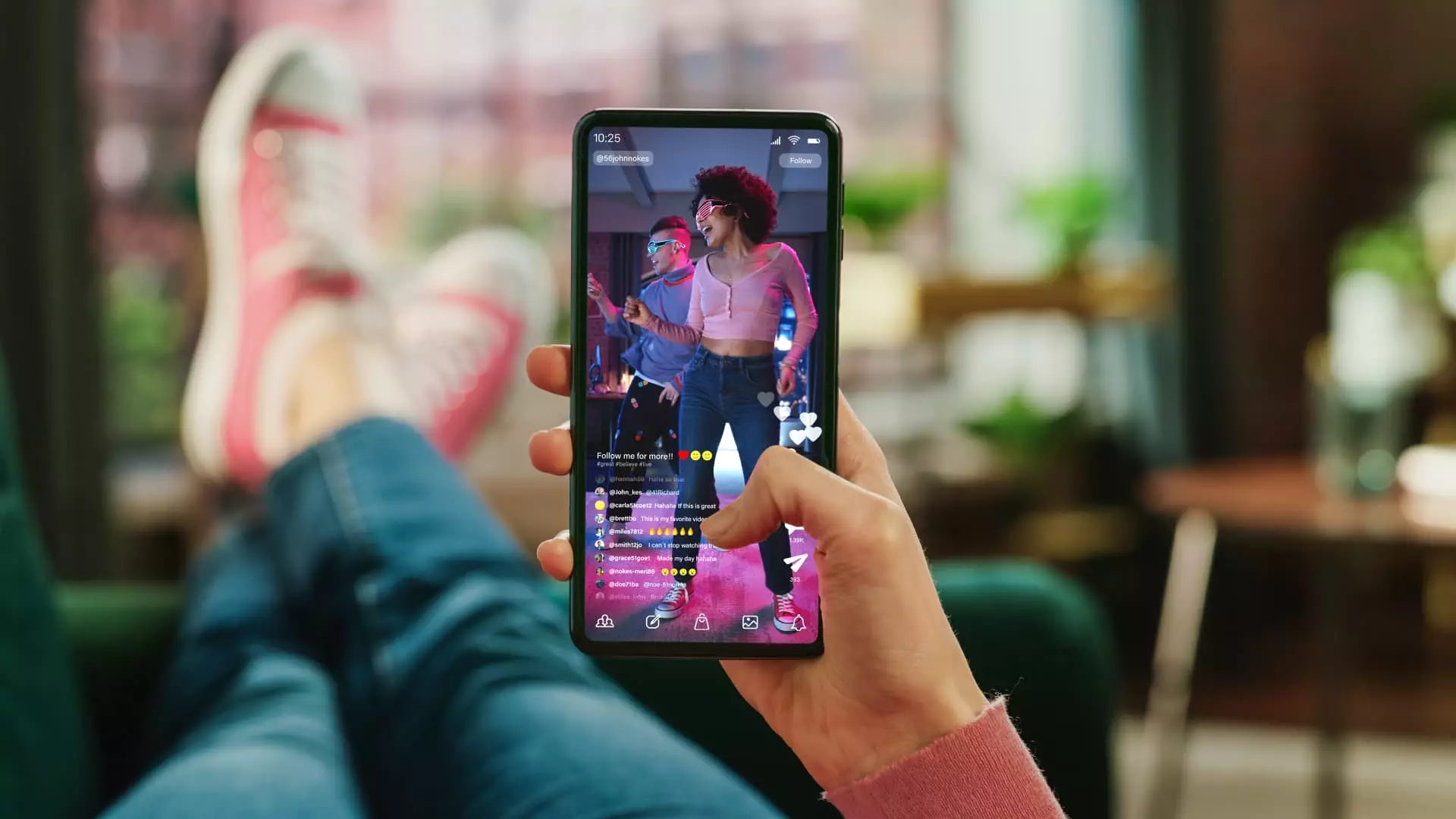In the swiftly evolving landscape of social media, TikTok has emerged as a monumental force since its global debut in 2016. Owned by ByteDance, this app has transformed how we consume content, eclipsing prior platforms with its captivating short-form videos. As of now, TikTok boasts over 1.12 billion monthly active users around the globe, showcasing its magnetic appeal, especially among the younger demographic. Unlike any other platform, TikTok is drawing users who spend an average of 108 minutes a day glued to their screens, as outlined by Apptopia. The app’s insatiable allure is reshaping everything from entertainment to shopping and even news dissemination. According to Jasmine Enberg, an analyst at eMarketer, TikTok has become the “center of the internet” for youth—an unequivocal testament to its original content strategy.
This staggering growth has sent ripples through the social media ecosystem, prompting giants like Meta and Google to rethink their own game plans. Platforms like Instagram Reels and YouTube Shorts are scrambling to replicate TikTok’s success with varying levels of innovation and adaptation. But despite the considerable resources at their disposal, competitors have yet to rival TikTok’s algorithm—an intricate system adept at engaging users with finely tailored content.
The Psychological Consequences of Endless Scrolling
However, TikTok’s success comes at a cost, particularly concerning the mental health of its users. Experts are increasingly raising alarms about the repercussions of short-form video consumption. Dr. Yann Poncin from Yale University’s Child Study Center has highlighted issues such as disrupted sleep and heightened anxiety levels that stem from addictive scrolling habits. This experience of “doom scrolling,” popularized by creators like Alyssa McKay, may offer entertainment but acts as a double-edged sword when it fosters an unhealthy relationship with technology.
Society is witnessing a chilling transition from deep, immersive storytelling—where audiences engage with curated narratives—to ephemeral viewing that prioritizes instant gratification. TikTok’s model functionally trains users to expect quick bursts of entertainment, which might erode attention spans and contribute to a digital culture of distraction. What was once considered leisurely entertainment has now evolved into a race for views measured in seconds, engaging users momentarily but leaving them wanting more.
Content Creators and the Monetization Quandary
For the creators involved, TikTok offers an enticing yet complicated ecosystem. Although viral fame can be achieved overnight, turning that virality into a sustainable career poses a considerable challenge. TikTok itself generated a whopping $23.6 billion in ad revenues last year, yet most creators remain trapped in a cycle of under-compensation. Monetization for short content remains significantly less rewarding compared to long-form platforms like YouTube, which offers a more straightforward ad insertion strategy.
As algorithms evolve to prioritize engagement, creators face increased pressure to adapt to the fluctuations of platform dynamics. This is not just a challenge; it’s also a systematic hurdle that could undermine the very creativity that platforms like TikTok promise to nurture. According to Enberg, while it has never been easier to chase virality, making a living off that virality is more challenging than ever before. Even ad dollar allocations are under scrutiny, as TikTok’s uncertain future regarding ownership raises questions about its stability in the market.
Market Dynamics and Future Opportunities
The landscape is further complicated by legislative scrutiny, especially as concerns grow about TikTok’s Chinese ownership and potential restrictions. In the face of such uncertainties, competitors like Meta and YouTube see an opportunity to reclaim lost ad revenue—projecting they could capture up to 50% of ad dollars reallocated if TikTok faces significant restrictions in the U.S. The potential for disruption is tangible, leaving space for platforms like Instagram and YouTube to fortify their own short-form offerings.
In this race not just to compete, but to adapt and potentially thrive, it’s clearer than ever that TikTok’s influence is both a beacon and a cautionary tale. The algorithmic precision that has captivated billions of users is now being watched closely by policymakers and competitors alike. As we find ourselves increasingly entwined in this web of short videos and diminishing attention spans, the question isn’t just about who will come out on top in the competition for short-form supremacy; it’s about the long-term impact this newfound obsession will have on our collective psyche and society at large.

